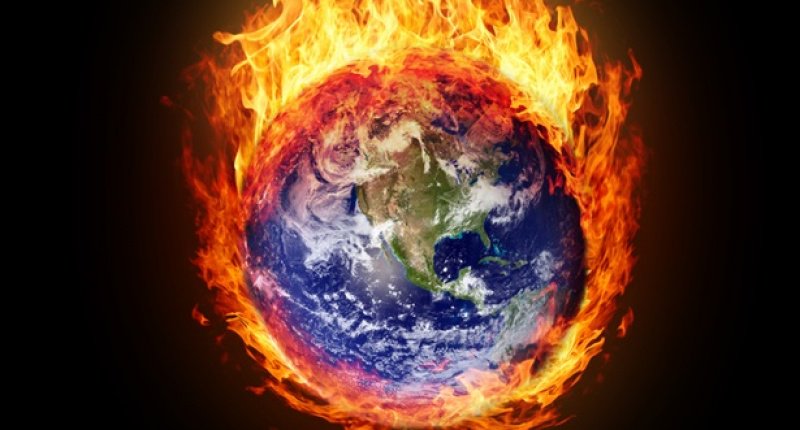I'm going to play the sensationalism card with this image:
But first, what do the papers say? In the first one ("Ice Cores and Glaciers") the authors present data suggesting anomalous peaks in "combustion aerosols" in ice cores layers from several continents dating to about 12,800 years ago. Those concentrations, presumably caused by combustion of organic matter, coincide with anomalous concentrations of dust and platinum which the authors associate with a cosmic impact. This is a good summary of the scenario that they envision:
The second paper ("Lake, Marine, and Terrestrial Sediments") examines dated sediment cores from numerous locations for the presence of peaks in charcoal and soot that would have been deposited as impact-related wildfires burned at large scales. Based on that analysis, the authors conclude that about 9% of the Earth's biomass was burned at the Younger Dryas boundary.
Nine percent is a big number no matter how you slice it. That's a lot of stuff on fire. I'll leave it to the climate people to evaluate how that number translates into changes in global weather patterns and weather that could have been a trigger for the Younger Dryas. We know the Younger Dryas happened, and we know that human societies would have had to have adjusted to it. As an archaeologist who works in the Late Pleistocene and Early Holocene, I immediately wonder how such a "biomass burning" scenario articulates with the archaeological record.
The burning would had to have been spotty (nine percent is not, after all, 100%). Even though the smoke and soot from combustion in the atmosphere is supposed to have contributed to the "nuclear winter" effect, however, direct evidence for it doesn't show up in every core. There are several possible reasons for those absences, including post-depositional processes ("the soot was deposited but has been destroyed"). What intrigues me is the possibility that some of variability in the deposition of charcoal/soot could be linked to which areas were actually burned. Surely the wildfires would have been of varying scale and duration, and would have affected nearby environments in complex ways. We're talking about global climate change, but local/regional burning (which presumably would have taken place over a relatively short period of time). Creating some kind of geographic map of which areas were ostensibly burned would be useful for comparison to what we know/suspect about shifts in human population in response to the Younger Dryas.
I feel the "cosmic collision apocalypse" trope has been seriously abused, mostly by those outside of the actual scholarly debate. If there was an impact that triggered the Younger Dryas, it did not result in the extinction of human populations in eastern North America in any way that I can see. What I see instead is change in the distribution of populations and shifts in technology, subsistence, and mobility. Clovis doesn't "go extinct:" it changes into something else that actually looks a lot like Clovis (large, fluted, parallel-sided points similar to Clovis [e.g., Gainey/Bull Brook, Redstone] are the technological descendants of Clovis and post-date the Younger Dryas boundary). Large-scale time/space changes in the distribution of Paleoindian populations are something I've been interested in. So far, I haven't seen anything that looks to me to be a direct response to some kind of cataclysm.
But what would such a response look like and how we tell it apart from the alternatives? These are good questions to ask and not simple ones to answer. I am unconvinced that there is good evidence for some kind of significant, widespread post-Clovis population drop. In some areas of the east (i.e., the Northeast and the lower peninsula of Michigan), human populations actually seem to expand their range northward as the climate gets colder. Long story short: it's complicated.
We surely have the tools to investigate human responses to the larger patterns of climate change that characterize the Younger Dryas. I do not know, however, if the terrestrial sediment record, as it exists now or as it can be analyzed in the future, is fine-grained enough to develop a model of where in Eastern Woodlands large-scale burning would have occurred in the "nuclear winter" scenario. Likewise, it's not clear that the archaeological record is sufficiently fine-grained to track the short term responses of human populations to the new landscape that would have been created by widespread burning.
That's all I've got for now. Fingers crossed a comet doesn't hit us before we get all this figured out.



 RSS Feed
RSS Feed
